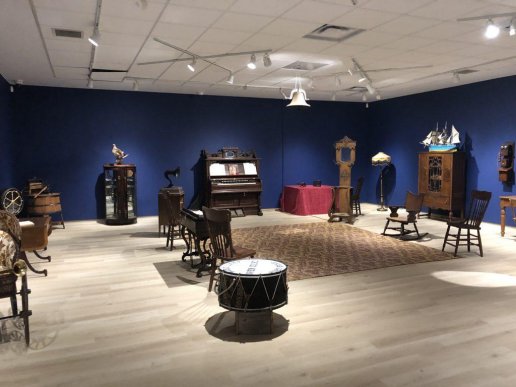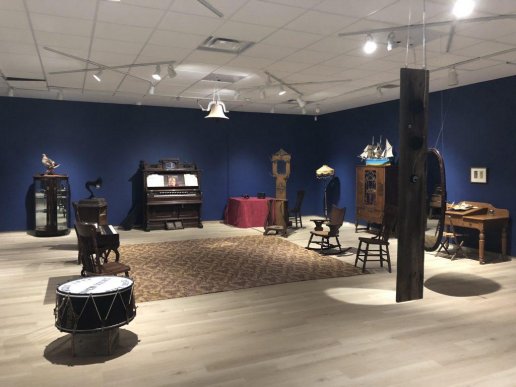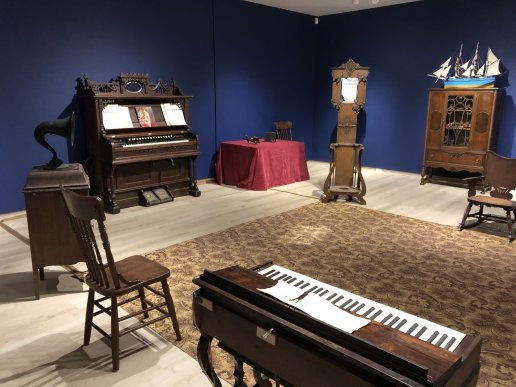Sonic Shadows: Imagined Soundscapes for Tom Thomson
Gordon Monahan takes various artifacts from the period of Canadian painter Tom Thomson’s life (late 19th and early 20th century furniture, musical instruments, artifacts, and various household items) from the collection of the Tom Thomson Art Gallery and the Grey Roots Museum and Archives (Owen Sound, Ontario), to use as sonic media for the processing and transmission of music specifically composed for this piece. Tactile transducers are attached to the various artifacts so that when musical recordings are transmitted into the transducers, the artifact becomes a sounding object, a transmitter of recorded sound, and essentially, a sound sculpture in itself.
In addition to his legacy as a painter and visual artist, Tom Thomson was also a talented musician who was a multi-instrumentalist. His musical upbringing included singing in the church at Leith, Ontario, and playing organ, piano, violin, mandolin, and cornet at home. He travelled with a mandolin, and therefore it can be assumed that he played and sang regularly, perhaps daily. This would suggest that Thomson’s life as a naturalist, fishing guide, wilderness and landscape painter, included his awareness of the natural soundscape. Thus, his musical and artistic contemplations may be juxtaposed within the context of his sensory awareness of both the natural landscape and natural soundscape.
Monahan has composed original pieces of music derived from several disparate sources related to Thomson’s natural and musical world:
• A piece of birch bark is graphically transposed to sheet music, based on the similarities of birch bark to piano rolls (a common source of ‘recorded’ piano music during Thomson’s era). Imagine a birch tree where the bark is scanned forwards and backwards, sometimes spinning around the circumference of the tree faster or slower, recorded into musical notation and played on various instruments, including plucked strings, harpsichord, percussion and piano.
• The calls of loons and wolves serve as a second set of sound sources, imagined and played on an Ondes Martenot, an instrument that was developed in the years during and following the first World War, overlapping with the last years of Thomson’s life.
• Selected hymns and popular songs of the 18th and 19th centuries—repertoire that Thomson most likely performed—become musical source material that Monahan uses to create new compositions for instrumental ensemble.
When viewed through the lens of acoustic analysis and wave vibration, the playing of music in any physical space results in the sympathetic vibration of surrounding objects situated in that space, as the sound waves from music simultaneously vibrate other nearby objects. This transfer of sound and vibration into adjacent objects and materials is a subtle yet ubiquitous phenomenon that is not often apparent to our senses. However, if one attaches a contact microphone to an adjacent table or other piece of furniture and amplifies these induced vibrations, a transformed version of the original sound becomes audible. Reversing this process by attaching contact transducers to the furniture results in a somewhat ghostly acoustic apparition that reconstitutes imagined musical sounds that may have vibrated into these historical local artifacts during the lifetime of Tom Thomson, for instance, when he played music at home or in his studio.
We sometimes speak of objects—those we view with historical, cultural, or personal significance—as having a ‘resonance’. While this may allude to an object’s character or presence, here the concept is taken a step further by giving the object a tangible sonic resonance, through the sonification and re-sonificaion of an historical artifact.
First exhibition: Tom Thomson Art Gallery, June 15 – September 14, 2024







